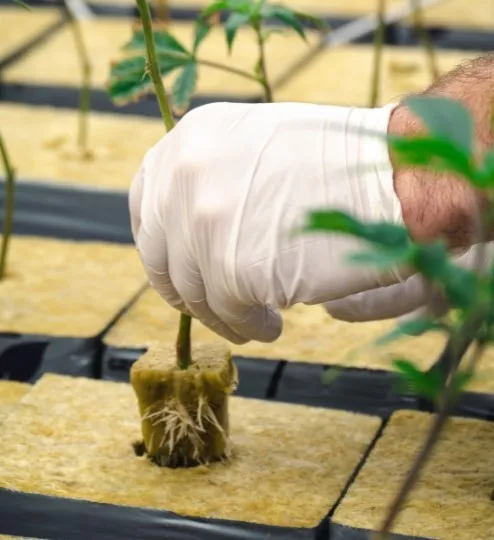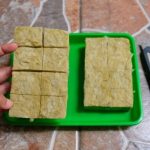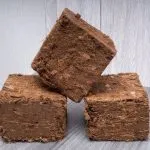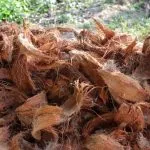Are you curious if you can put Rockwool cubes in soil? Well, you’re not alone, and we’ve got the answers you’re looking for. Rockwool is a popular growing medium that offers excellent water retention and aeration properties. It’s commonly used in hydroponic systems, but what if you want to combine it with traditional soil?

The good news is, yes, you can put Rockwool cubes in soil. In fact, it is quite common for gardeners to do so, especially when starting seeds or propagating cuttings. The transition from Rockwool to soil is smooth and promotes healthy root development. Just remember to adjust the pH of your Rockwool cubes before planting, as they usually have a higher pH than the ideal range for most plants. Soak your cubes in water with a pH adjusted to around 5-6 and you’re ready to plant.
Understanding Rockwool Cubes
Rockwool cubes are a versatile growing medium made from stone wool, which is derived from basalt rock fibers. These cubes are popular among gardeners for their ability to retain water and provide ample aeration for plant roots. The structure of Rockwool fibers allows for excellent drainage, ensuring that your plants never sit in overly soggy conditions.
Due to its unique manufacturing process, Rockwool is naturally resistant to many common gardening problems such as pests, mold, and diseases. One of the primary benefits of using Rockwool cubes is their ability to offer a consistent environment for your plants. The uniformity of the material ensures that your plant’s roots receive steady access to water, nutrients, and oxygen—all of which are essential for healthy growth.
When working with Rockwool cubes, it’s essential to maintain a slightly acidic pH level of around 5.5 to 6.5. This can be achieved by adding a few drops of lemon juice to the water you’ll use to soak your cubes. Preparing a suitable environment for your Rockwool cubes will help your plants get started on the right foot. It is a must to know how to use Rockwool for growing plants in hydroponics to ensure a higher chance of success.
Related: Check out some good substitutes for Rockwool if it’s not the ideal grow medium for you.
Can You Put Rockwool Cubes In Soil?
You might be wondering if it’s possible to use Rockwool cubes in soil or if they have to be transplanted only to a hydroponic system. Well, yes, you can certainly put Rockwool cubes in soil! When using Rockwool cubes for seed starting or transplanting, you can treat them similarly to soil starter plugs. Here’s what you need to know:
First, be sure to soak the Rockwool cube in treated water for a few hours. After soaking, gently squeeze it to remove some of the moisture, leaving just enough to support the seed. Place your seed in the Rockwool cube, and wait until you see roots emerging before putting the cube in the soil.
When transplanting the Rockwool cube into your soil or finishing pots, choose a pot size that is suitable for your plant, such as a 3-3.5 gallon pot for a 2-inch cube. Make sure to avoid pouring water directly onto the top of the cube, as this can cause issues with proper moisture distribution.
Rockwool cubes are made from natural fibers and provide excellent moisture retention, making them a popular choice for seed starting, germination, and hydroponic growing. When using Rockwool cubes in soil, simply follow the tips provided to ensure the successful growth of your plants.
Remember to keep the conditions optimal for the plants you’re growing—for example, maintain proper temperature, light, and watering schedule. By using Rockwool cubes in soil, you’ll have a versatile and reliable method for starting and growing your plants in a friendly and efficient manner.
Specific Scenarios for Using Rockwool Cubes
Rockwool Cubes in Hydroponics
When using Rockwool cubes in hydroponics, you can easily control the nutrients and humidity levels, ensuring optimal conditions for your plants. They also offer excellent drainage, making them perfect for various hydroponic systems, including drip irrigation and nutrient film techniques. Be sure to saturate the cubes with water and adjust the pH to the proper level before placing seeds or cuttings to encourage successful rooting.
Related: If you’re using Rockwool cubes for cloning before transplanting them, you’ll need smaller cubes at first before switching to larger ones. Find out what Rockwool cubes sizes are available to use here.
Transplanting Rockwool Cubes Into Soil
Sometimes, you may need to transplant Rockwool cubes into soil, a process that requires some care to ensure success. When transplanting from a hydroponic system to soil, it’s essential to be gentle with the roots to avoid damaging them. First, give the Rockwool cube a quick soak in room-temperature water with light nutrients to help with the transition process. After this, prepare the soil by mixing your preferred potting soil with some vermiculite and perlite, ensuring that it’s appropriately moistened. Vermiculite and perlite help with drainage and aeration, creating a suitable environment for rockwool-grown plants.

Create a hole in the soil just large enough to accommodate the Rockwool cube and gently place the cube inside, ensuring that the cube’s top is level with the soil surface. Fill the remaining space with your potting soil mixture, gently pressing down around the cube to eliminate air gaps and provide stability. Once transplanted, give the plant a light watering and maintain regular watering and nutrient schedules according to the plant’s needs. To encourage healthy root development, you could also consider using a rooting hormone for soil-based growing conditions.
By using Rockwool cubes in hydroponic systems and carefully transplanting them into soil when necessary, you can enjoy a bountiful garden with strong, healthy plants. Remember to be diligent with your plant’s needs and adjust your care routine accordingly for successful gardening.
When to Transplant Rockwool Seedlings
When you see roots growing from the bottom of your Rockwool cubes, it’s time to transplant your seedlings into soil. Transplanting clones from Rockwool to soil can be a delicate process, but following these steps will help ease the transition and ensure your plants thrive.
First, choose the right time to transplant. Ideally, you should transplant your seedlings when the climate is warm, and the soil is moist. This environment will help your plants adapt to their new surroundings more easily.
Next, prepare the planting pots with the appropriate soil. Fill the pots to within 1/4 inch of the rim with potting soil or a soil blend recommended for your specific seedlings. Good drainage is essential, so be sure to choose pots with drainage holes.
When transplanting, hold the Rockwool cube gently to avoid damaging the emerging roots. Carefully position the seedling in the center of the pot. Surround the Rockwool cube with soil, lightly packing it to keep the plant stable. Be cautious not to cover the Rockwool entirely with soil, as too much moisture can lead to diseases like damping off.
Finally, water the newly transplanted seedlings. To avoid overwatering, check the moisture level in the soil and make sure it’s damp but not soaking wet. Maintaining a consistent watering schedule is crucial for successful transplanting from Rockwool to soil.
Remember, you’re aiming to make the transition as smooth as possible for your young plants. By following these guidelines, you’ll give your seedlings the best chance at success in their new soil environment.
How to Remove Rockwool From Roots
Now, there may be instances where you’ll want to remove the seedlings from the Rockwool cubes before planting them in soil to finish growing fully. The roots will be tightly encased in and around the cube when you remove it from the cloner or hydroponic system, so removing the cube is a delicate job.
It’s essential to be careful when removing Rockwool from your plant roots to avoid any damage. Here’s a friendly guide to help you safely and effectively transition your plants from Rockwool to soil.
First, moisten the Rockwool cube slightly. It’s easier to remove the Rockwool when it’s damp but not soaking wet. Gently squeeze the cube to remove any excess water and create a more pliable environment for your plant roots.
Next, use your fingers to delicately separate the Rockwool fibers starting at the top of the cube and working your way down. Be patient and try not to rush this process, as haste could risk harming your plant’s roots.
In some cases, plant roots may be deeply embedded within the Rockwool cube. If you encounter firmly intertwined roots, you shouldn’t attempt to forcibly remove them. Instead, place the entire Rockwool cube into the soil, ensuring there’s adequate drainage to prevent the cube from retaining too much water.
Remember, the health and growth of your plants rely on the integrity of their roots. By taking the time to properly remove Rockwool or choosing to transplant the entire cube when necessary, you’ll give your plants a strong foundation in their new soil environment.
Handling and Safety Precautions of Rockwool Cubes
Health and Safety Considerations
When handling Rockwool cubes, it’s essential to consider the health and safety aspects. To protect yourself, always wear personal protective equipment (PPE) such as gloves and a dust mask. This precaution ensures that you don’t come into contact with the fibers, which can cause skin irritation and respiratory issues. Make sure to handle the cubes with care, as the fibers can become airborne if the cubes break apart.
Disposal and Reusability of Rockwool Cubes
After your plants have grown and you are no longer using the Rockwool cubes, it’s crucial to dispose of them properly. They can be tricky to break down, as they are not biodegradable. However, there are a few options for reusing and safely disposing of your used Rockwool cubes.
- Reuse: If the cubes are in good condition after your plants have grown, you can consider reusing them for your next planting. Just ensure to clean the cubes thoroughly to remove any leftover plant material before reusing them.
- Repurpose: You can cut up the used cubes and place them into compost or garden beds to improve aeration and water retention.
- Recycle: Check with your local recycling facilities if they accept Rockwool products for recycling. Some may have special recycling programs or events for handling these types of materials.
- Dispose of: When disposing of Rockwool cubes, place them in a sealed bag or container to prevent any fibers from getting into the environment. Then, dispose of the container according to your local waste collection guidelines.







